Muhammad Lawan
MEGA: xLSTM with Multihead Exponential Gated Fusion for Precise Aspect-based Sentiment Analysis
Jul 01, 2025Abstract:Aspect-based Sentiment Analysis (ABSA) is a critical Natural Language Processing (NLP) task that extracts aspects from text and determines their associated sentiments, enabling fine-grained analysis of user opinions. Existing ABSA methods struggle to balance computational efficiency with high performance: deep learning models often lack global context, transformers demand significant computational resources, and Mamba-based approaches face CUDA dependency and diminished local correlations. Recent advancements in Extended Long Short-Term Memory (xLSTM) models, particularly their efficient modeling of long-range dependencies, have significantly advanced the NLP community. However, their potential in ABSA remains untapped. To this end, we propose xLSTM with Multihead Exponential Gated Fusion (MEGA), a novel framework integrating a bi-directional mLSTM architecture with forward and partially flipped backward (PF-mLSTM) streams. The PF-mLSTM enhances localized context modeling by processing the initial sequence segment in reverse with dedicated parameters, preserving critical short-range patterns. We further introduce an mLSTM-based multihead cross exponential gated fusion mechanism (MECGAF) that dynamically combines forward mLSTM outputs as query and key with PF-mLSTM outputs as value, optimizing short-range dependency capture while maintaining global context and efficiency. Experimental results on three benchmark datasets demonstrate that MEGA outperforms state-of-the-art baselines, achieving superior accuracy and efficiency in ABSA tasks.
DualKanbaFormer: Kolmogorov-Arnold Networks and State Space Model Transformer for Multimodal Aspect-based Sentiment Analysis
Aug 30, 2024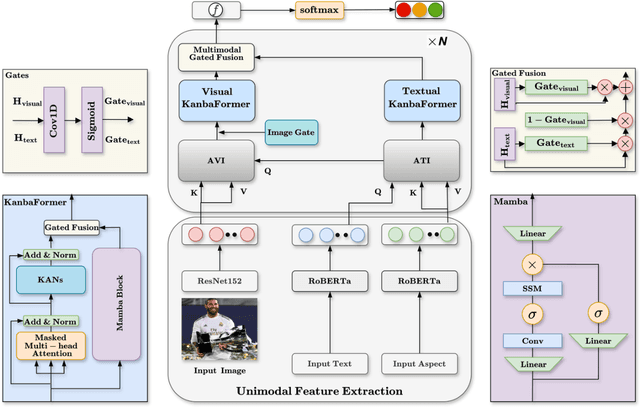
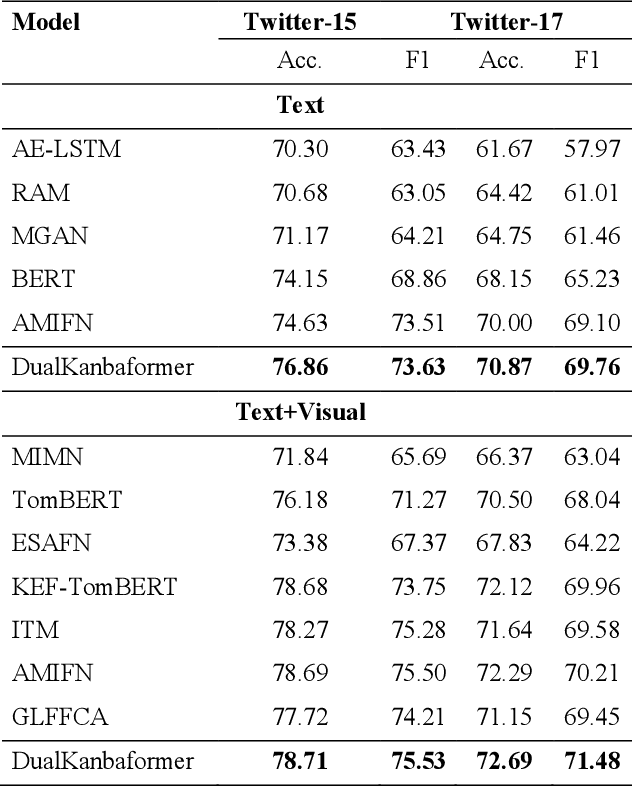
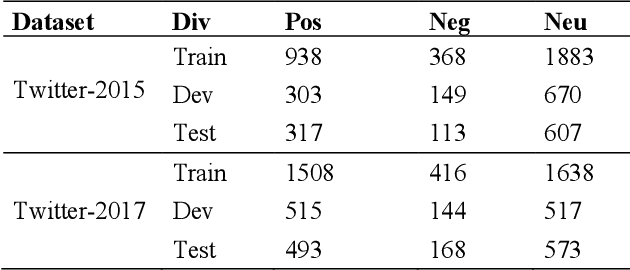
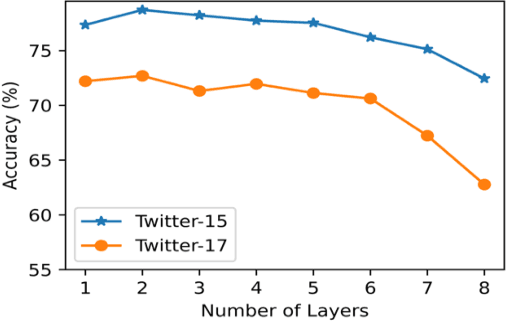
Abstract:Multimodal aspect-based sentiment analysis (MABSA) enhances sentiment detection by combining text with other data types like images. However, despite setting significant benchmarks, attention mechanisms exhibit limitations in efficiently modelling long-range dependencies between aspect and opinion targets within the text. They also face challenges in capturing global-context dependencies for visual representations. To this end, we propose Kolmogorov-Arnold Networks (KANs) and Selective State Space model (Mamba) transformer (DualKanbaFormer), a novel architecture to address the above issues. We leverage the power of Mamba to capture global context dependencies, Multi-head Attention (MHA) to capture local context dependencies, and KANs to capture non-linear modelling patterns for both textual representations (textual KanbaFormer) and visual representations (visual KanbaFormer). Furthermore, we fuse the textual KanbaFormer and visual KanbaFomer with a gated fusion layer to capture the inter-modality dynamics. According to extensive experimental results, our model outperforms some state-of-the-art (SOTA) studies on two public datasets.
MambaForGCN: Enhancing Long-Range Dependency with State Space Model and Kolmogorov-Arnold Networks for Aspect-Based Sentiment Analysis
Jul 14, 2024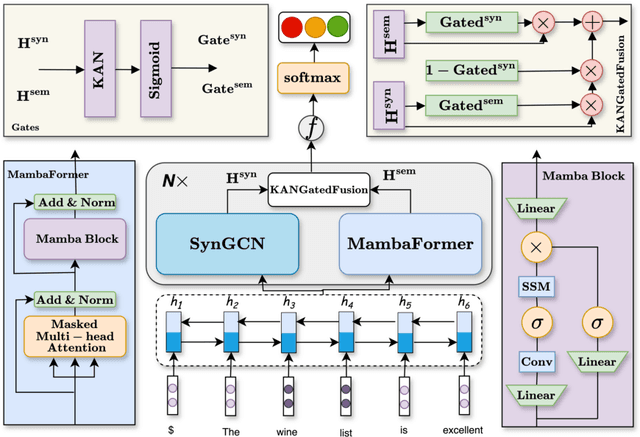
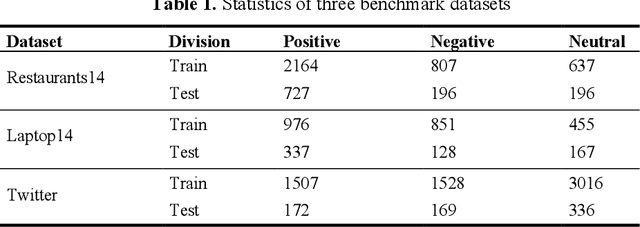
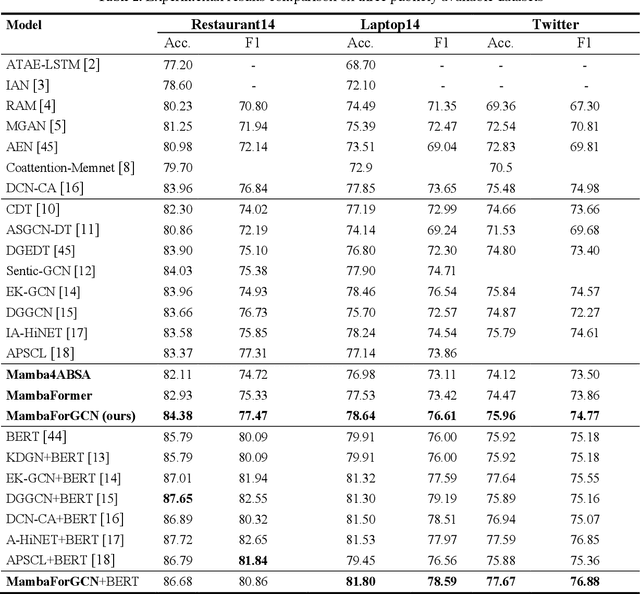
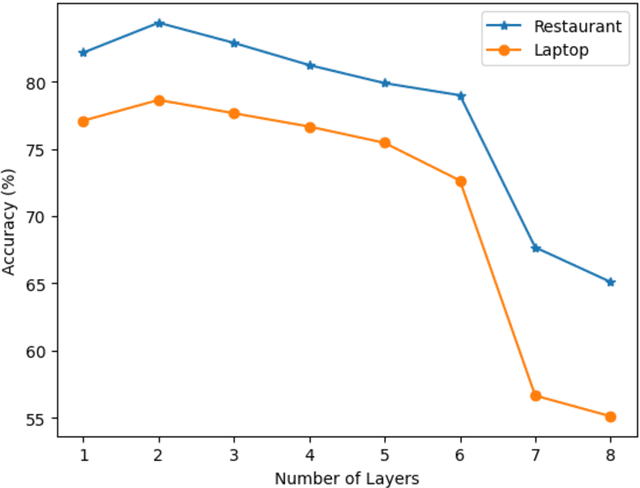
Abstract:Aspect-based sentiment Analysis (ABSA) identifies and evaluates sentiments toward specific aspects of entities within text, providing detailed insights beyond overall sentiment. However, Attention mechanisms and neural network models struggle with syntactic constraints, and the quadratic complexity of attention mechanisms hinders their adoption for capturing long-range dependencies between aspect and opinion words in ABSA. This complexity can lead to the misinterpretation of irrelevant con-textual words, restricting their effectiveness to short-range dependencies. Some studies have investigated merging semantic and syntactic approaches but face challenges in effectively integrating these methods. To address the above problems, we present MambaForGCN, a novel approach to enhance short and long-range dependencies between aspect and opinion words in ABSA. This innovative approach incorporates syntax-based Graph Convolutional Network (SynGCN) and MambaFormer (Mamba-Transformer) modules to encode input with dependency relations and semantic information. The Multihead Attention (MHA) and Mamba blocks in the MambaFormer module serve as channels to enhance the model with short and long-range dependencies between aspect and opinion words. We also introduce the Kolmogorov-Arnold Networks (KANs) gated fusion, an adaptively integrated feature representation system combining SynGCN and MambaFormer representations. Experimental results on three benchmark datasets demonstrate MambaForGCN's effectiveness, outperforming state-of-the-art (SOTA) baseline models.
 Add to Chrome
Add to Chrome Add to Firefox
Add to Firefox Add to Edge
Add to Edge